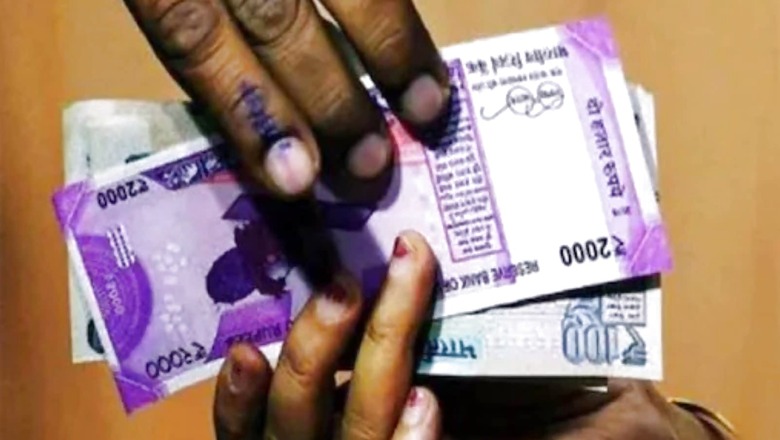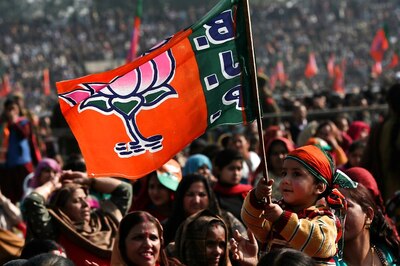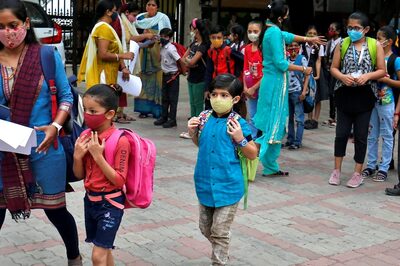
views
What will be the GDP growth rate in the second quarter of financial year 2022? Different institutions, organisations and rating agencies have estimated different rates for India’s GDP growth. As per the Economic Times–ET polls, the estimated GDP rate ranges from 6.5-9.9 per cent, with an average growth rate of 8.3 per cent. While HDFC keeps it at 6.5 per cent, Barclays pegs it at 9.9 per cent. SBI, ICRA, Deutsche Bank, India Rating and CARE estimate it at 7.3-7.5 per cent, 7.7 per cent, 8 per cent, 8.26 per cent and 8-9 per cent, respectively. However, the actual numbers for FY22Q2 will be released at the end of the month.
All estimates indicate that the economy is bouncing back. We all know how the country’s economy faltered last fiscal year due to the global COVID-19 pandemic. The GDP contracted 7.3 per cent in the financial year 2020-21. The GDP was in the southward zone in the first half of last fiscal. It had declined 24.4 per cent in April to June, followed by 7.3 per cent contraction in the second quarter. However, it moved north in the third quarter with a marginal 0.4 per cent growth and recorded a growth of 1.6 per cent in the last quarter.
The only way to get the economy back on track was to get all the people vaccinated against coronavirus. Realising the seriousness of the situation, the central government took the initiative and promised to provide free vaccines to all. To date, 109.63 crore doses of vaccine have been administered across the country under the nationwide vaccination drive. As a result, 25.2 per cent of India’s adult population is fully vaccinated.
With a sustained pick-up in the pace of vaccination and a fall in new COVID-19 cases, the economic recovery is getting back on track. The average estimated GDP growth of 8.3 per cent for the second quarter of the current fiscal testifies to this. The GDP registered a growth of 20.1 per cent in April-June quarter of FY22. Finance Minister Nirmala Sitharaman is also claiming the same. The ministry said the country is on track to become the fastest growing economy in the world. India is attracting big-ticket global investment on the back of a strong recovery.
The Nomura India Business Resumption Index (NIBRI) is tracking economic recovery of different countries on a weekly basis. NIBRI of India has jumped to 105.7 for the week ending October 31. It is 5.7 percentage points above the pre-pandemic level of 100 and 0.9 points higher than the previous week of 104.8. It is an indicator of macro and micro growth. The RBI Economic Activity Index also suggests that the GDP grew 9.6 per cent in the second quarter.
High frequency economics drivers, such as goods and services tax, e-way bills, strong rebound in consumption, strong export performance, industrial production, port cargo traffic, vehicle sales and improved restoration of supply chain, suggest a pick-up in economic activity since the start of the July-September quarter.
The government’s tax revenue in the first half of the current fiscal has reached Rs 9.21 lakh crore. It is 59.6 per cent against the target of Rs 15.45 lakh crore. The average revenue from GST is 1.14 lakh crore during the same time. The GST revenue for the month of October was Rs 1.30 lakh crore—24 per cent higher than the GST revenue in the same month last year. It is the second highest collection since the introduction of GST.
India’s merchandise export in October 2021 was $35.47 billion, an increase of 42.33 per cent over $24.92 billion in October 2020. Export during April to October was $232.58 billion, an increase of 54.51 per cent over $150.53 billion during the same period last year. The IHS Markit purchasing manager’s index (PMI) surged to 58.4 in October from 55.2 in September. E-way bills registered an all-time high of 73.5 million in October. It is required for transportation of goods, if their value is more than Rs 50,000.
All economic variables are indicating that all successive quarters and current fiscal may see high economic growth. However, the government should take care of the informal sector. As per the IMF, the size of informal economy was 52 per cent of the GDP in 2018. But as per the SBI report, the share of informal sector in the overall economic activity shrunk to 15-20 per cent in the previous fiscal year.
Vinay K. Srivastava teaches at I.T.S Ghaziabad. The views expressed in this article are those of the author and do not represent the stand of this publication.
Read all the Latest Opinions here

















Comments
0 comment